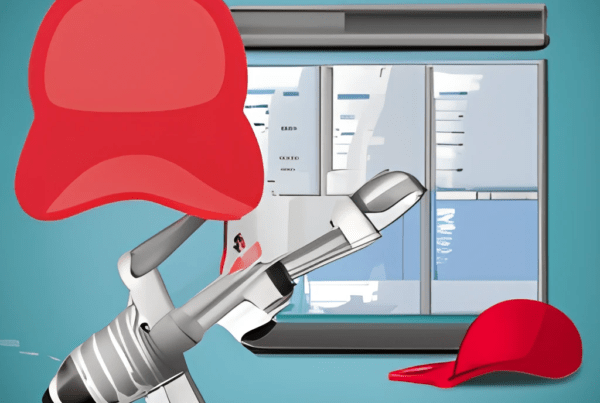Patient retention: a phrase that makes clinical trial site staff groan almost as much as ‘patient recruitment’, or maybe even more depending on the site. Most clinical trial sites struggle with patient retention – how to keep patients involved in studies with active engagement while adeptly providing data to reach clinical trial outcomes. In fact, according to Forte Research Systems, 85% of clinical trials fail to retain enough patients, which means that most sites have likely experienced patient retention challenges. How can your site overcome these challenges? Here are three ways:
Create an impeccable patient experience to keep them coming back
 From start to finish, every single aspect of the patient experience should be outstanding in order to make your patients feel comfortable and to earn their trust. This includes the initial phone screen, the lobby presentation at your site, the physician visit, smooth payment procedures, and amiable staff. If you can think of any area that your site can improve, do it! Make your site abundantly welcoming to patients.
From start to finish, every single aspect of the patient experience should be outstanding in order to make your patients feel comfortable and to earn their trust. This includes the initial phone screen, the lobby presentation at your site, the physician visit, smooth payment procedures, and amiable staff. If you can think of any area that your site can improve, do it! Make your site abundantly welcoming to patients.
A patient who goes to a site, sits in a waiting room with no reading material, meets a grumpy nurse who draws blood and leaves as quickly as possible, then sees the physician who is complaining about having a tight schedule is not very likely to stick it out through the duration of the clinical trial. On the other hand, a patient who is greeted warmly by a receptionist, asked about her grandson’s third birthday party, given a short waiting time, checked for adverse events and general well-being by the nurse and doctor, and given a granola bar after a fasting blood draw will be much more inclined to return to the site.
It’s simple: the more you can cater every aspect of your site, including physical environment, site staff, and clinical procedures, to the patient, the more impeccable the patient experience and the more patients return for future visits.
Go above and beyond for convenience
Along the lines of catering to your patients, your site needs to create convenience to increase patient retention. This is especially true in the area of appointment times, where patients are often required to take time off of of work to adhere to a 9am – 5pm appointment schedule. When competing priorities come up for the patient, the inconvenience factor will come into play and they are more likely to miss an appointment. Rescheduling is then a must, and the frustrated patient already has the inconvenience factor stuck in his or her mind, making him or her less likely to want to come back to your site.
Instead of creating a rigid 9am – 5pm appointment schedule, create a schedule with some flexibility. Have appointments up until 6 or 7pm, even just one or two days of the week, or start early and make appointments beginning at 7am. If a patient can only make appointments at 6:30am on Thursdays, be convenient and ask two staff members to show up to work early to meet with him at that time. Adjust your site hours to conveniently fit the needs of your patients and they will show up to their appointments.
To go a step above and beyond, make appointment reminders convenient as well by utilizing text message appointment reminders. Studies show that the average phone user picks up his or her phone 1,500 times per week – that’s almost nine times an hour! Your patients likely check their phones consistently throughout the day, so will receive appointment reminders very easily and quickly. Patients are grateful for these reminders, and love feeling like they are on top of their schedules. Giving patients this sense of command over their appointments will minimize missed appointments and allow them to easily reply to the text message with any issues that may come up. Plus, you can include the site’s address in the text for easy integration with maps programs on your patient’s smartphones as well – even more convenient for your patient!
Build up patient confidence to increase patient retention
Another common reason why patients leave clinical trials early is due to the influence of friends or family who are not comfortable or familiar with clinical trials. Patients may be enthusiastic at the trial’s start and fade away as they tell more people about their involvement. This change of heart can be remedied by arming patients with education and tools to inform their trusted circle of influence about the clinical trial and ease any discomfort about participation.
If a phone number is prominently displayed on literature given to patients, anyone in the patient’s circle of influence is able to call or text the site with any questions or concerns. Text messages are especially useful as a trusted and easy-to-manage line of communication for both the patient’s friends and family and the site staff. PDFs or URLs of literature that won’t get misplaced as easily as paper versions can also be sent via text, which is important in an era where patients thrive to understand and be in control of their clinical conditions.
Patient retention is tough, exhausting, and high-priority. Not only vital to the survival of your site, patient retention is critical to the success of clinical trials. Try implementing these three strategies and incorporating text messaging into your site’s routine, then let us know how it goes!
Interested in using text messaging in your next study? GET PRICING
These articles may be of interest to you:
How to Build Your Database for Patient Recruitment
Market Your Core Indications for Optimal Patient Recruitment
Why You’re Not Meeting Your Patient Recruitment Goals
Photo by Kaz Andrew on Flickr / cc
Want to learn more? Join the Patient Recruitment and Retention (PR+R) Group on LinkedIn!








